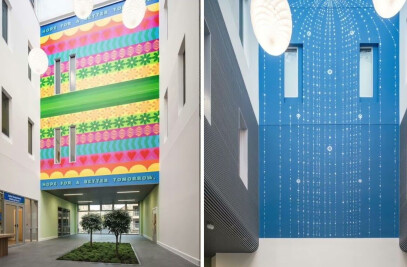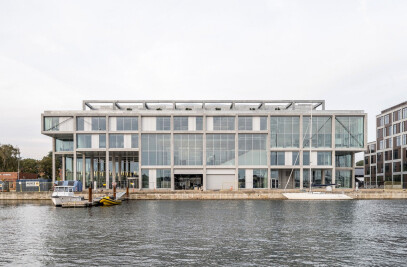11-Sep-2017 C.F. Møller Architects wins Iconic Award 2017 in the category ‘Architecture with distinction’ with the Copenhagen International School. A new and very sustainable school in Nordhavn a part of Copenhagen under development. Iconic Awards is an international competition for architects, designers, the construction sector and industry. It is the first neutral international architecture and design competition that focuses on how the disciplines interact. It acknowledges visionary architecture, innovative products and sustainable communication from all fields of architecture, the construction and property sectors and the manufacturing industry in five main categories. As such the competition shines the spotlight on the elementary significance of the interaction of individual disciplines.
- We are very happy to receive an Iconic Award 2017 since the award is an acknowledgement of C.F. Møller Architects fundamental approach to creating sustainable, innovative and long lasting solutions by a proven holistic driven method, says Partner and Architect Mads Mandrup Hansen. Design for all ages Copenhagen International School is located on a prominent site in Copenhagen's new Nordhavn district. The school is designed to link the school premises with the public sphere in the urban environment, and give the school an open ambience. The main school building is subdivided into four smaller towers, each specially adapted to meet the needs of children at different stages of development. It has a capacity of 1.200 pupils.
The school building’s unique facade is covered in 12,000 solar panels, each individually angled to create a sequin-like effect, which will supply more than half of the school's annual electricity consumption. The solar cells cover a total area of 6,048 square meters making it one of the largest building-integrated solar power plants in Denmark.
30-Jun-2015 Solar-powered School of the Future. CIS Nordhavn is a new school building for the Copenhagen International School, which will be located on a prominent site in Copenhagen's new Nordhavn district. The 25,000 m2 school building will be Copenhagen's largest school, and accommodate 1,200 stu-dents and 280 employees.
The modern educational architecture is designed to link the school premises with the public sphere in the urban environment, and give the school an open ambience. The promenade outside the school will become an urban port-side space providing opportunities for relaxation and various activities.
The main school building is subdivided into four smaller “towers”, ranging from five to seven storeys, each specially adapted to meet the needs of children at different stages of development. For example, the classrooms for the youngest pupils are particularly large: A full range of functions will take place in and around the classroom, each of which has designated green spaces and areas with drama/performance facilities, PE, etc. The subdivision of the school into four units facilitates community, identity and easy wayfinding.
All four school units are built on top of the ground-floor base, which contains common and more extrovert activities, including a foyer, sports facilities, a canteen, a library and performance facilities. The classroom units can thus be closed-off outside normal school hours, whilethe common areas will remain open for school and local community events.
The base includes a common roof terrace which will function as a school playground for the whole school – and the youngest pupils in particular. The elevated school playground provides a secure environment, which prevents students from coming too close to the water or from straying off the school premises.
The school building’s unique facade will be covered in 12,000 solar panels, each indi-viduallyangled to create a sequin-like effect, which will supply more than half of the school's annual electricity consumption.The solar cells will cover a total area of 6,048 square meters, making it one of the largest building-integrated solar power plants in Denmark, estimated to produce over200 MWh per year.
In addition to contributing to the school's green profile, the solar cells also form a permanent part of the school’s curriculum, allowing students to monitor energy production and use data in physics and mathematics classes.

































